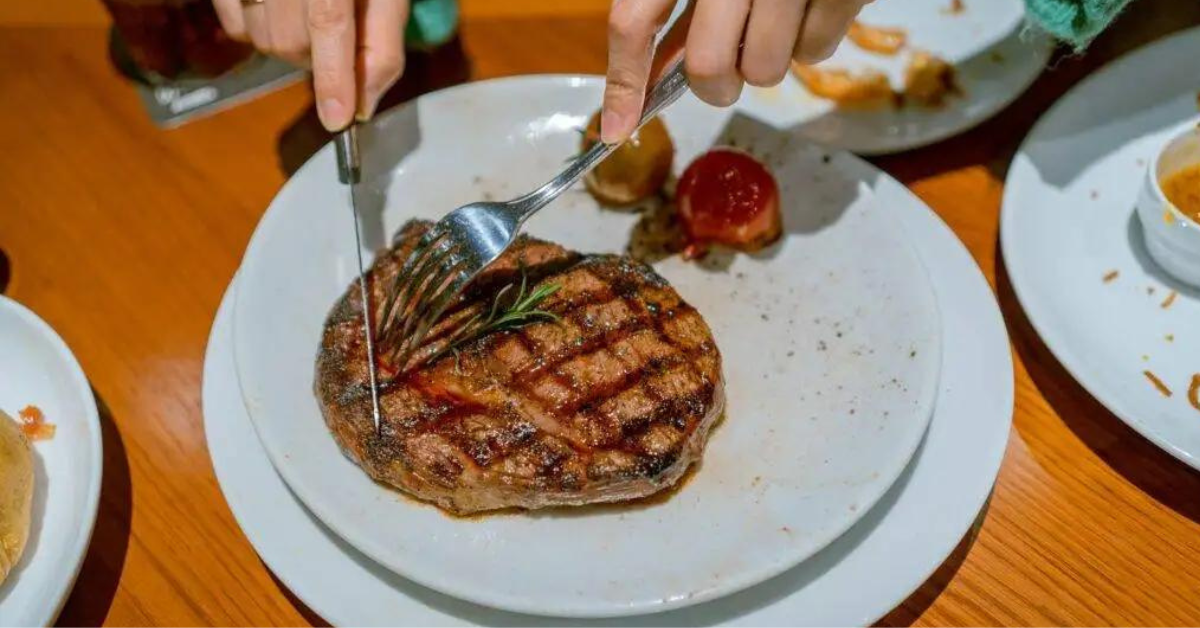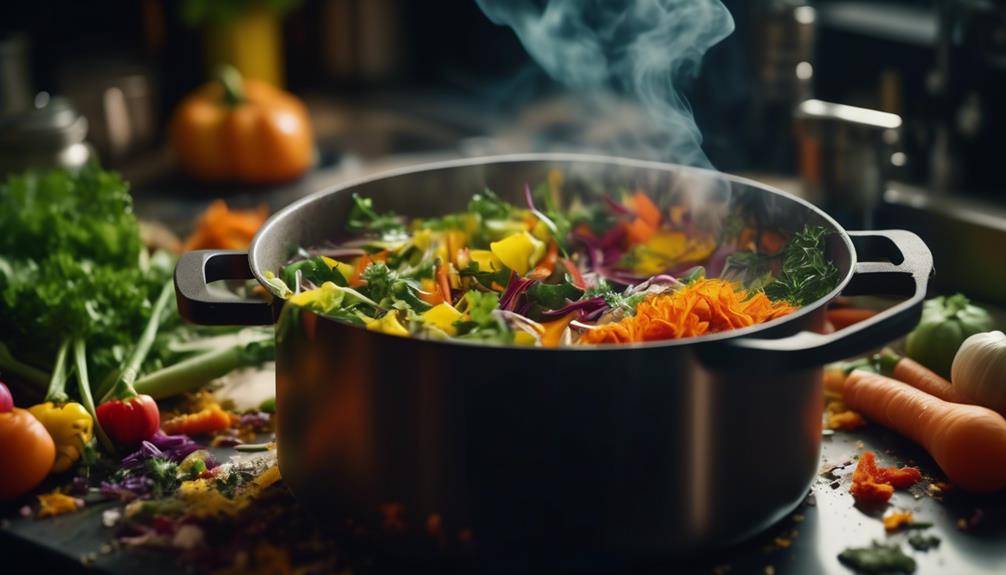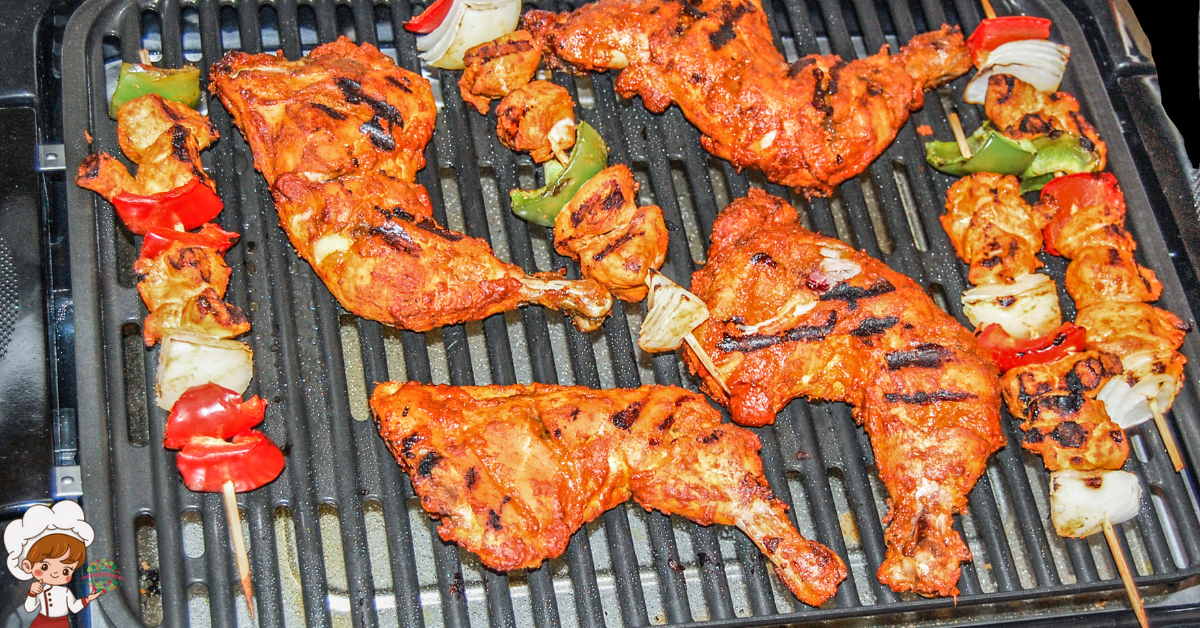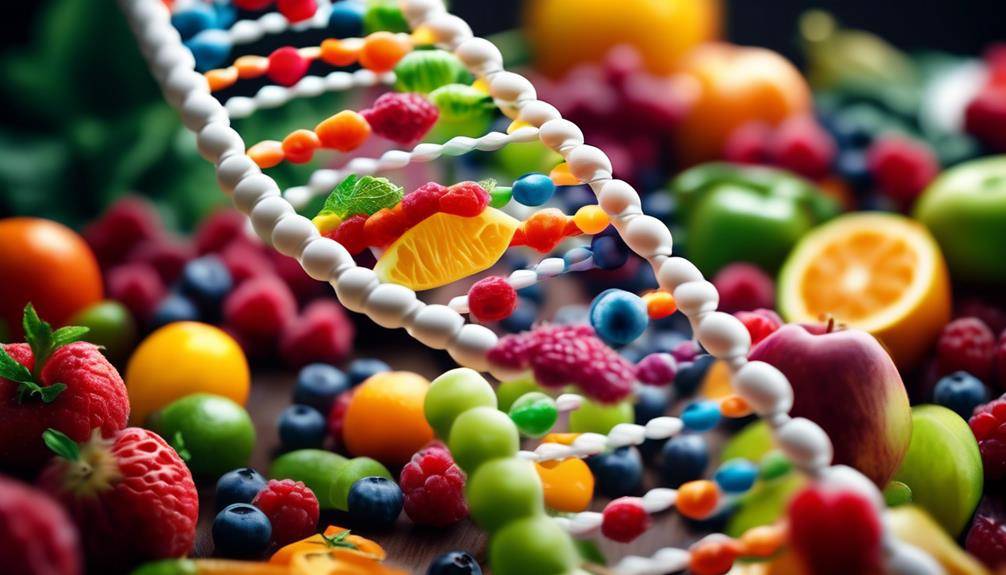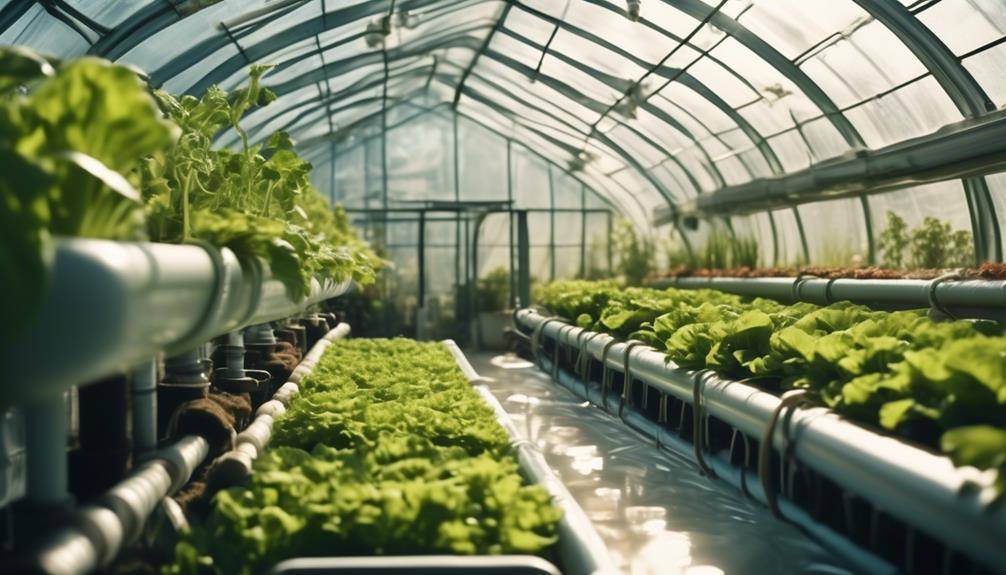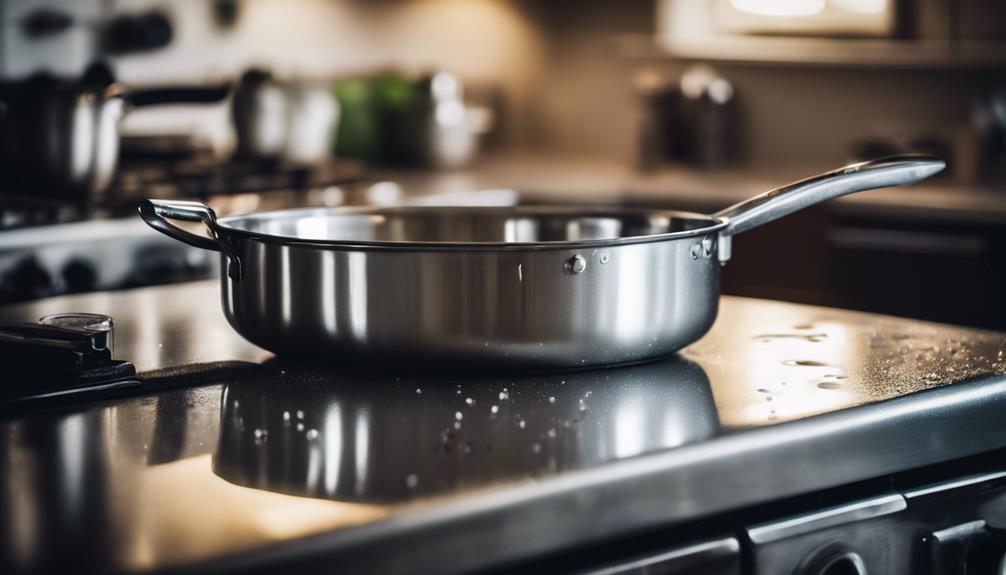Emerging Trend Of Molecular Gastronomy in Fine Dining
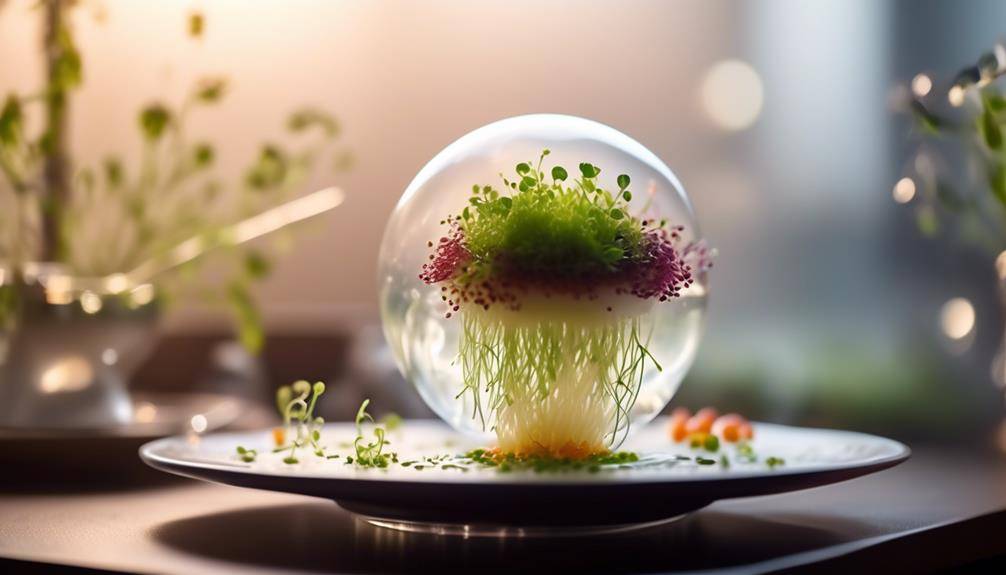
Molecular Gastronomy in Fine Dining; Imagine stepping into a fine dining experience that is as captivating as a symphony, where each dish is orchestrated with precision and creativity. Molecular gastronomy, like a masterful conductor, blends science and artistry to push the boundaries of traditional cuisine. This innovative culinary approach has been captivating food enthusiasts and challenging conventional notions of what a meal can be. But what exactly is molecular gastronomy, and how does it elevate the world of fine dining? Join us as we explore the fascinating world of molecular gastronomy and discover how it has revolutionized the culinary landscape, tantalizing both the taste buds and the imagination.
The Origins of Molecular Gastronomy
The origins of molecular gastronomy can be traced back to the innovative and experimental mindset of a group of pioneering chefs in the late 20th century. These chefs, including Ferran Adrià, Heston Blumenthal, and Harold McGee, challenged traditional culinary techniques and sought to push the boundaries of flavor and presentation. They were driven by a desire to understand the science behind cooking and to use that knowledge to create new and exciting dining experiences.
One of the key techniques that emerged from this movement was the use of liquid nitrogen in the kitchen. Liquid nitrogen is an incredibly cold substance that can freeze food in a matter of seconds. By using this technique, chefs were able to create dishes with unique textures and unexpected flavors. For example, they could freeze a fruit puree into a sorbet-like consistency, or create delicate foams and powders out of ingredients that would not typically lend themselves to such forms.
Another technique that gained popularity during this time was sous vide cooking. Sous vide involves vacuum-sealing food in a plastic pouch and cooking it in a water bath at a precise temperature for an extended period of time. This method allows for precise control over the cooking process, resulting in perfectly cooked meats and vegetables with enhanced flavors and textures.
The origins of molecular gastronomy are rooted in the curiosity and ingenuity of these pioneering chefs. Through their innovative techniques, they revolutionized the culinary world and forever changed the way we think about food. Today, molecular gastronomy continues to inspire chefs and diners alike, pushing the boundaries of what is possible in the kitchen and offering a truly unique dining experience.
Exploring the Science Behind Molecular Gastronomy
Building upon the innovative techniques developed by pioneering chefs, molecular gastronomy takes a deep dive into the scientific principles behind the creation of extraordinary culinary experiences. It is a discipline that combines culinary arts with scientific knowledge to push the boundaries of traditional cooking. Through culinary science experiments and molecular gastronomy techniques, chefs are able to transform ingredients and textures, resulting in visually stunning and mind-blowing dishes.
Here are three fascinating aspects of the science behind molecular gastronomy:
- Food as Chemistry: Molecular gastronomy explores the chemical reactions that occur during cooking. Chefs use techniques such as spherification, where liquids are transformed into spheres, and emulsification, where two immiscible liquids are combined into a stable mixture. By understanding the chemical properties of ingredients, chefs can manipulate textures and flavors to create new and exciting dishes.
- Playful Manipulation: Molecular gastronomy allows chefs to play with the senses and challenge our preconceived notions of food. Through techniques like foams, gels, and powders, chefs can transform familiar ingredients into unexpected textures. Imagine biting into a cloud of foamed fruit, or experiencing the burst of flavor from a liquid-filled edible sphere. These playful manipulations of texture and presentation elevate the dining experience to a whole new level.
- Sensory Exploration: Molecular gastronomy goes beyond taste to engage all the senses. Chefs experiment with aromas, colors, sounds, and even temperature to enhance the overall dining experience. For example, chefs may use liquid nitrogen to create a dramatic smoking effect or incorporate molecular techniques to infuse flavors into the air. By engaging multiple senses, molecular gastronomy creates a multisensory journey that leaves a lasting impression.
Techniques and Tools Used in Molecular Gastronomy
In the realm of molecular gastronomy, chefs wield an array of innovative techniques and specialized tools to transform ingredients into culinary masterpieces. These culinary innovations have revolutionized the way dishes are prepared and presented, pushing the boundaries of traditional cooking methods. With the help of modern kitchen tools, chefs are able to create unique textures, flavors, and visual experiences that captivate the senses.
One of the key techniques used in molecular gastronomy is spherification. This technique involves transforming liquids into gel-like spheres that burst with flavor when bitten into. By using sodium alginate and calcium chloride, chefs can create spheres with a thin membrane that encapsulates the liquid inside. This technique allows for endless possibilities when it comes to creating surprising and delightful flavor combinations.
Another popular technique used is sous vide cooking. This method involves vacuum-sealing ingredients in a plastic bag and cooking them in a precisely controlled water bath at a low temperature for an extended period of time. The result is perfectly cooked food that retains its natural flavors and textures. Sous vide cooking is particularly popular for cooking proteins such as steak and fish, as it ensures even cooking and prevents overcooking.
To execute these techniques and more, chefs rely on modern kitchen tools such as immersion circulators, rotary evaporators, and liquid nitrogen tanks. These tools enable precise temperature control, efficient extraction of flavors, and the creation of unique textures. They have become essential in the world of molecular gastronomy, allowing chefs to push the boundaries of what is possible in the culinary world.
The Role of Molecular Gastronomy in Fine Dining
When it comes to the role of molecular gastronomy in fine dining, culinary science techniques and cutting-edge flavor combinations take center stage. Molecular gastronomy allows chefs to push the boundaries of traditional cooking, experimenting with new textures, presentations, and flavors. By incorporating scientific principles and innovative tools, this culinary approach adds a sense of excitement and surprise to the dining experience, elevating it to a whole new level.
Culinary Science Techniques
Molecular gastronomy, with its innovative culinary science techniques, revolutionizes the fine dining experience, elevating it to new levels of creativity and sophistication. By incorporating scientific concepts into the culinary world, chefs are able to push the boundaries of traditional cooking and create dishes that are as visually stunning as they are delicious. Here are three ways in which culinary innovation and scientific concepts converge in molecular gastronomy:
- Spherification: This technique involves transforming liquids into spheres using sodium alginate and calcium chloride. The result is a burst of flavor as the sphere bursts in your mouth, creating a delightful explosion of taste.
- Sous Vide: By cooking food at a precisely controlled temperature in a water bath, chefs are able to achieve consistent results and retain the natural flavors and textures of the ingredients.
- Foams: Using a siphon, chefs can create light and airy foams that add a whimsical touch to dishes, while also enhancing the overall dining experience.
These techniques not only showcase the creativity of chefs but also highlight the scientific principles that underpin the culinary world. Molecular gastronomy truly brings the art and science of cooking together in a harmonious union.
Cutting-Edge Flavor Combinations
With its cutting-edge flavor combinations, molecular gastronomy revolutionizes fine dining by pushing the boundaries of traditional cooking and creating dishes that are as bold and surprising as they are exquisite. This culinary approach utilizes cutting-edge techniques and innovative pairings to create a sensory experience like no other. Chefs are no longer limited by conventional ingredients and cooking methods; instead, they embrace the scientific principles behind molecular gastronomy to create dishes that challenge the palate and ignite the imagination.
By combining unexpected flavors and textures, molecular gastronomy takes fine dining to a whole new level. Imagine savoring a dish that combines the richness of foie gras with the tanginess of passion fruit or enjoying a dessert that blends the creaminess of chocolate with the heat of chili peppers. These daring flavor combinations not only showcase the chef’s creativity but also provide diners with a truly unforgettable culinary experience.
Innovation in Flavor Pairings and Combinations
Get ready to embark on a culinary adventure like no other as we explore the world of innovation in flavor pairings and combinations. Prepare your taste buds for unique combinations that will challenge your preconceived notions of what works well together. From experimental flavor pairings to innovative culinary fusions, the possibilities are endless. Brace yourself for an explosion of flavors that will leave you craving more.
Unique Taste Combinations
When it comes to pushing the boundaries of flavor, fine dining establishments have taken innovation in taste pairings and combinations to new heights. With molecular gastronomy techniques and a willingness to experiment, chefs have created unique taste combinations that surprise and delight diners. Here are three examples of innovative flavor pairings and unexpected taste combinations that have made waves in the culinary world:
- Foie gras and strawberries: The rich, buttery flavor of foie gras pairs surprisingly well with the sweet and tangy taste of strawberries. The combination of the savory and fruity elements creates a harmonious balance on the palate.
- Chocolate and caviar: The luxurious and indulgent nature of chocolate is elevated to new heights when combined with the briny, delicate flavors of caviar. The contrasting textures and flavors create a truly decadent experience.
- Beetroot and coffee: The earthy sweetness of roasted beetroot is enhanced by the bitter notes of coffee, resulting in a complex and intriguing taste combination. The unexpected pairing brings out the depth of flavors in both ingredients, creating a memorable culinary experience.
These innovative flavor pairings and unexpected taste combinations showcase the creativity and skill of chefs who are constantly pushing the boundaries of gastronomy. By challenging traditional notions of what flavors work together, they create memorable and exciting dining experiences for adventurous food lovers.
Experimental Flavor Pairings
In the realm of fine dining, chefs continuously push the boundaries of flavor by creating innovative and unexpected combinations that challenge traditional notions of taste. One way they achieve this is through experimental flavor pairings. By using unconventional pairings, chefs are able to surprise and delight diners with new and exciting flavor experiences. In order to create these unconventional pairings, chefs often employ experimental techniques such as molecular gastronomy. This scientific approach to cooking allows chefs to manipulate ingredients and transform them into entirely new forms, opening up a world of possibilities for flavor combinations. The result is dishes that are both visually stunning and deliciously unexpected, leaving diners amazed and eager to explore the next daring flavor pairing.
Innovations in Culinary Fusion
Culinary fusion has revolutionized the world of flavor pairings and combinations, introducing a new level of creativity and excitement to the dining experience. With the constant drive for culinary innovation, chefs are constantly pushing the boundaries of traditional cuisine, blending diverse ingredients and techniques from different cultures to create unique and unexpected flavor combinations. Here are some notable innovations in culinary fusion:
- Asian-Mexican Fusion: The marriage of Asian and Mexican flavors has resulted in mouthwatering dishes like Korean BBQ tacos and sushi burritos. This combination brings together the bold and spicy flavors of Mexican cuisine with the delicate and umami-packed ingredients of Asian cooking.
- Mediterranean-Indian Fusion: The fusion of Mediterranean and Indian cuisines has led to the creation of dishes that blend the aromatic spices of Indian food with the fresh and vibrant ingredients of Mediterranean cuisine. Think tandoori-style grilled fish with a side of couscous salad.
- Latin-Asian Fusion: This fusion brings together the vibrant and bold flavors of Latin American cuisine with the delicate and intricate flavors of Asian cooking. Imagine a tangy ceviche with a hint of soy sauce and ginger, or a spicy Sriracha-infused empanada.
These innovative flavor pairings and combinations have breathed new life into the culinary world, providing a delightful surprise for adventurous diners seeking a unique and memorable dining experience.
Textures and Structures: Creating Sensory Delights
Creating a symphony of textures and structures, molecular gastronomy takes fine dining to new heights of sensory delight. This innovative culinary approach transforms the dining experience by exploring new techniques and ingredients, resulting in dishes that tantalize not only the taste buds but also the senses of touch and sight.
One of the key elements of molecular gastronomy is the manipulation of textures. Chefs use various techniques, such as spherification and foams, to create unexpected and delightful textures in their dishes. Imagine biting into a seemingly solid sphere only to have it burst in your mouth, releasing a burst of flavor. Or imagine a delicate foam that dissolves on your tongue, leaving behind a subtle, lingering taste. These sensory experiences add a level of excitement and surprise to the dining experience, engaging not just your taste buds but also your sense of touch.
In addition to textures, molecular gastronomy also focuses on creating visually stunning structures on the plate. Chefs use tools like tweezers and liquid nitrogen to meticulously arrange ingredients, creating intricate patterns and designs that are almost too beautiful to eat. The presentation of a dish becomes an art form, with every element carefully considered and placed with precision. This attention to detail enhances the overall dining experience, making it not just a meal but a sensory journey.
Molecular gastronomy has revolutionized fine dining by pushing the boundaries of culinary innovation. Through the exploration of textures and structures, chefs are able to create sensory delights that captivate and surprise diners. By engaging all the senses, molecular gastronomy elevates the dining experience to a new level, making it a truly unforgettable and immersive experience. So, the next time you dine at a molecular gastronomy restaurant, prepare yourself for a symphony of textures and structures that will leave you in awe.
Molecular Gastronomy’s Influence on Presentation and Plating
Transforming the art of plating, molecular gastronomy brings a new level of creativity and innovation to the presentation of dishes. Plating techniques have long been an integral part of fine dining, but molecular gastronomy takes it to a whole new level. With its emphasis on scientific principles and experimental techniques, this culinary movement has revolutionized the way chefs think about visual aesthetics. Here are three ways in which molecular gastronomy has influenced presentation and plating:
- Deconstructing dishes: One of the hallmarks of molecular gastronomy is the deconstruction of traditional dishes. By breaking down components and presenting them in a unique way, chefs can create visually stunning plates that surprise and delight diners. For example, a classic dessert like a tiramisu can be deconstructed into individual elements like coffee-infused foam, mascarpone spheres, and cocoa dust, each carefully arranged on the plate to create a visually striking composition.
- Playful use of textures: Molecular gastronomy allows chefs to play with different textures in their dishes, adding an element of surprise and intrigue to the presentation. From crispy foams to liquid nitrogen-frozen powders, the possibilities are endless. For instance, a savory dish could be enhanced by adding a crunchy element like a flash-fried vegetable chip or a delicate edible flower petal, providing not only a textural contrast but also a visually appealing element to the plate.
- Edible art: With molecular gastronomy, chefs can turn their plates into works of art. By utilizing innovative plating techniques, they can create visually stunning compositions that are almost too beautiful to eat. From intricate sauce drizzles to precise geometric arrangements, every element on the plate is carefully considered and placed. This attention to detail elevates the dining experience, making it not just about the taste but also about the visual feast before you.
The Art of Molecular Mixology: Cocktails Elevated
Molecular mixology takes the art of crafting cocktails to new heights, pushing boundaries and redefining what it means to elevate the drinking experience. With cocktail innovations and the use of molecular mixology techniques, bartenders are able to create drinks that not only tantalize the taste buds but also engage the senses in new and exciting ways.
One of the key aspects of molecular mixology is the use of scientific techniques to transform the ingredients and presentation of cocktails. By utilizing tools like liquid nitrogen, spherification, and foams, bartenders are able to create visually stunning and unique drinks that go beyond the traditional cocktail. These techniques allow for the manipulation of texture, temperature, and presentation, resulting in cocktails that are not only delicious but also visually captivating.
In addition to the visual appeal, molecular mixology also allows for the exploration of new flavor combinations and experiences. By infusing spirits with different flavors, creating flavored foams, or using edible garnishes, bartenders can create cocktails that surprise and delight the palate. The use of molecular techniques also opens up possibilities for experimenting with different textures and mouthfeels, adding an extra layer of complexity to the drinking experience.
However, it is important to note that while molecular mixology can elevate the drinking experience, it is not without its limitations. Some argue that the focus on molecular techniques can sometimes overshadow the importance of balance and simplicity in a cocktail. It is crucial for bartenders to find the right balance between innovation and tradition, ensuring that the drink remains enjoyable and approachable.
Molecular Gastronomy and Sustainable Food Practices
With the foundation of molecular mixology laid, it’s time to explore how the principles of molecular gastronomy can be applied to promote sustainable food practices in the culinary world. Molecular gastronomy, with its focus on scientific techniques and culinary innovation, has the potential to revolutionize the way we approach sustainability in the kitchen. Here are three ways in which molecular gastronomy can contribute to sustainable food practices:
- Reducing food waste: One of the key principles of molecular gastronomy is maximizing the utilization of ingredients. By using techniques like spherification and emulsification, chefs can transform food scraps into exciting and visually appealing dishes. This not only reduces waste but also adds value to ingredients that would otherwise be discarded.
- Locally sourced and seasonal ingredients: Molecular gastronomy encourages chefs to experiment with new flavors and textures, often incorporating unique ingredients from around the world. However, it is important to balance this with a focus on sustainability. By sourcing locally and using seasonal ingredients, chefs can support local farmers and reduce the carbon footprint associated with transporting ingredients long distances.
- Culinary fusion: Molecular gastronomy is all about pushing boundaries and challenging traditional culinary norms. By combining techniques and flavors from different cuisines, chefs can create innovative dishes that blend cultural influences. This culinary fusion not only creates exciting dining experiences but also promotes cultural appreciation and understanding.
Famous Chefs and Restaurants Embracing Molecular Gastronomy
Get ready to be blown away by the trendsetting culinary techniques and cutting-edge flavor combinations that famous chefs and restaurants are embracing through molecular gastronomy. This avant-garde approach to cooking has captured the attention of food enthusiasts around the world, pushing the boundaries of what is possible in the realm of fine dining. From Ferran Adrià’s iconic elBulli in Spain to Heston Blumenthal’s inventive dishes at The Fat Duck in the UK, these culinary pioneers are revolutionizing the way we experience food, elevating it to an art form that tantalizes not only our taste buds, but also our senses.
Trendsetting Culinary Techniques
Renowned chefs and esteemed restaurants across the globe have wholeheartedly embraced the avant-garde culinary techniques of molecular gastronomy, revolutionizing the art of fine dining. These trendsetting culinary techniques have sparked a wave of creativity and innovation in the culinary world, pushing the boundaries of traditional cooking. Here are three subtopics that will draw you into the fascinating world of molecular gastronomy:
- Culinary Experiments: Chefs are using scientific principles to experiment with flavors, textures, and presentation. They are creating unique dishes that challenge our expectations and redefine what food can be.
- Avant-Garde Techniques: From spherification to foams and gels, chefs are using cutting-edge techniques to transform ingredients into visually stunning and delightful culinary creations.
- Mind-Blowing Presentations: Molecular gastronomy is not just about taste, but also about the visual experience. Chefs are using molecular techniques to create visually stunning dishes that are as beautiful as they are delicious.
Prepare to be amazed as we delve into the world of trendsetting culinary techniques in molecular gastronomy.
Cutting-Edge Flavor Combinations
Prepare your taste buds for an unforgettable culinary journey as we explore the cutting-edge flavor combinations crafted by famous chefs and celebrated restaurants that have fully embraced the art of molecular gastronomy. Innovation in food pairing and experimental flavor combinations have become the hallmark of these culinary pioneers, pushing the boundaries of traditional cuisine and challenging our palates in new and exciting ways.
Imagine savoring a dish where the sweetness of fresh strawberries is paired with the earthy richness of truffles. Or experiencing the unexpected combination of smoky bacon and sweet caramel, creating a harmonious blend of savory and sweet flavors. These creative and bold flavor combinations not only surprise and delight, but also showcase the limitless possibilities that molecular gastronomy has to offer.
By using scientific techniques and a deep understanding of the chemical reactions that occur during cooking, these chefs are able to create flavor profiles that are truly unique and unforgettable. They experiment with different ingredients, textures, and temperatures, manipulating them to create dishes that are not only visually stunning but also explode with complex and layered flavors.
In the realm of molecular gastronomy, traditional rules are meant to be broken, and chefs are encouraged to think outside the box. It is through this spirit of innovation and experimentation that these cutting-edge flavor combinations are born, challenging our preconceived notions of taste and forever changing the culinary landscape. So, buckle up and get ready to embark on a gastronomic adventure like no other, where flavor knows no boundaries and the possibilities are endless.
The Future of Molecular Gastronomy in Fine Dining
The future of molecular gastronomy in fine dining holds promise for innovative culinary experiences that combine science and artistry to redefine traditional flavors and presentations. As technology continues to advance, the possibilities for molecular gastronomy are endless. Here are three exciting future applications and technological advancements that will shape the future of this culinary art form:
- Nanoencapsulation: Imagine a dish where every bite explodes with a burst of flavor. Nanoencapsulation, a technique that involves enclosing tiny amounts of flavor within a protective shell, allows chefs to create intense flavor sensations. With this technology, the dining experience becomes a multisensory journey, where flavors are released in unexpected ways.
- 3D Printing: In the future, 3D printers may find a place in fine dining establishments. These printers can create intricate and customizable shapes and textures, allowing chefs to design visually stunning dishes. The ability to control the precise placement and arrangement of ingredients will revolutionize the presentation of food, making each plate a work of art.
- Virtual Reality Dining: As technology advances, virtual reality (VR) could become a popular addition to the dining experience. Imagine stepping into a virtual world where you can taste and smell the flavors of exotic locations or historical eras. VR dining offers the opportunity to transport diners to different culinary landscapes, expanding their palates and creating unforgettable dining experiences.
These future applications and technological advancements will push the boundaries of what is possible in fine dining. Molecular gastronomy will continue to evolve, combining scientific innovation with artistic expression to create culinary experiences that delight and surprise. As chefs and scientists collaborate, the future of molecular gastronomy looks bright, promising a revolution in the way we perceive and enjoy food.
Molecular Gastronomy in Fine Dining; Frequently Asked Questions
How Can Molecular Gastronomy Techniques Be Applied to Vegetarian or Vegan Dishes?
To apply vegetarian or vegan molecular gastronomy techniques, you can experiment with plant-based ingredients, like agar-agar or carrageenan, to create unique textures and flavors. It’s an innovative way to elevate the dining experience for those who prefer a meat-free lifestyle.
Are There Any Health Concerns or Risks Associated With Consuming Molecular Gastronomy Dishes?
There are potential health concerns and risks associated with consuming molecular gastronomy dishes. It’s important to note that the use of certain chemicals and techniques in these dishes may have an impact on your health.
Can Amateur Chefs Try Molecular Gastronomy Techniques at Home, or Is It Strictly for Professional Chefs?
Amateur chefs, you can definitely try molecular gastronomy techniques at home! It’s not just for the professionals. Get creative with spherification, foams, and gels. Experiment with new flavors and textures. The kitchen is your playground!
Does Molecular Gastronomy Focus Solely on Creating Visually Stunning Dishes, or Does It Also Enhance the Flavor of the Food?
Molecular gastronomy goes beyond visual presentation in fine dining. It enhances the flavor of the food by incorporating scientific techniques and ingredients. It adds depth and complexity to dishes, elevating the overall dining experience.
How Does Molecular Gastronomy Contribute to the Overall Dining Experience in Fine Dining Establishments?
Innovation and culinary techniques are key to elevating the overall dining experience in fine dining establishments. Molecular gastronomy pushes boundaries, creating unique and mind-blowing dishes that leave you in awe.
Conclusion
In conclusion, molecular gastronomy has revolutionized the world of fine dining, bringing together science and artistry in the creation of innovative and captivating dishes. Through the use of cutting-edge techniques and tools, talented chefs have been able to push the boundaries of flavor and presentation, elevating the dining experience to new heights. With its focus on sustainability and its ability to inspire creativity, molecular gastronomy is undoubtedly the future of fine dining.



